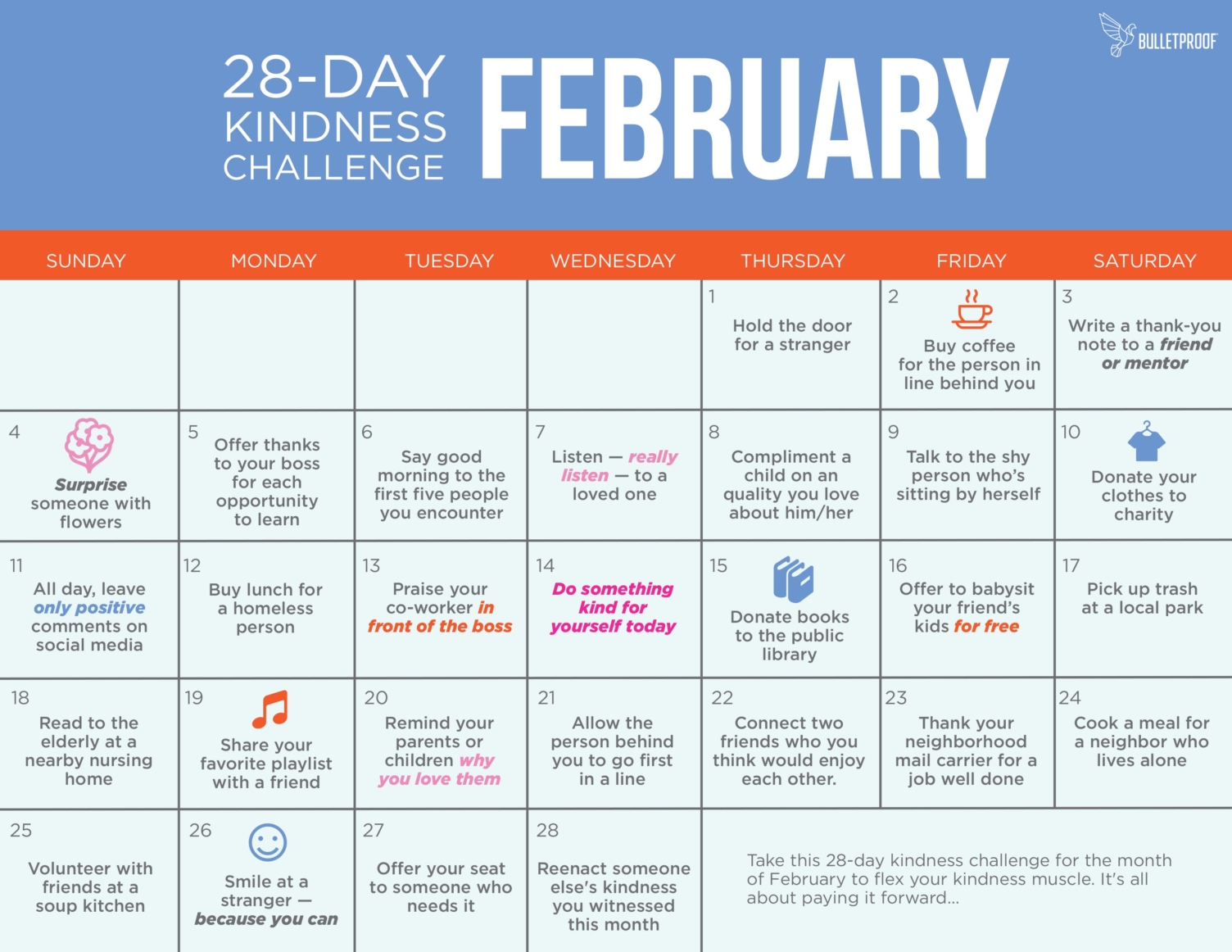Make February your month to flex your kindness muscle. Studies show that just one random act of kindness a day reduces stress, anxiety, and depression[ref url=”http://care.diabetesjournals.org/content/39/11/1963″]. According to David R. Hamilton, Ph.D., one small act of compassion invigorates your body with feel-good hormones like serotonin — making you calmer, healthier, and happier. Kindness accompanied by emotional connection also releases oxytocin, which in turn is cardioprotective as it lowers blood pressure. Kindness makes others feel good, too. Ready to feel more energized, confident, and even perhaps live longer? Pay it forward each day this month with these simple acts of kindness. Go for it — start small and maybe, just maybe, you’ll spark a chain-reaction through your community. After all, kindness is contagious.
Get a printable version of the Kindness Calendar



